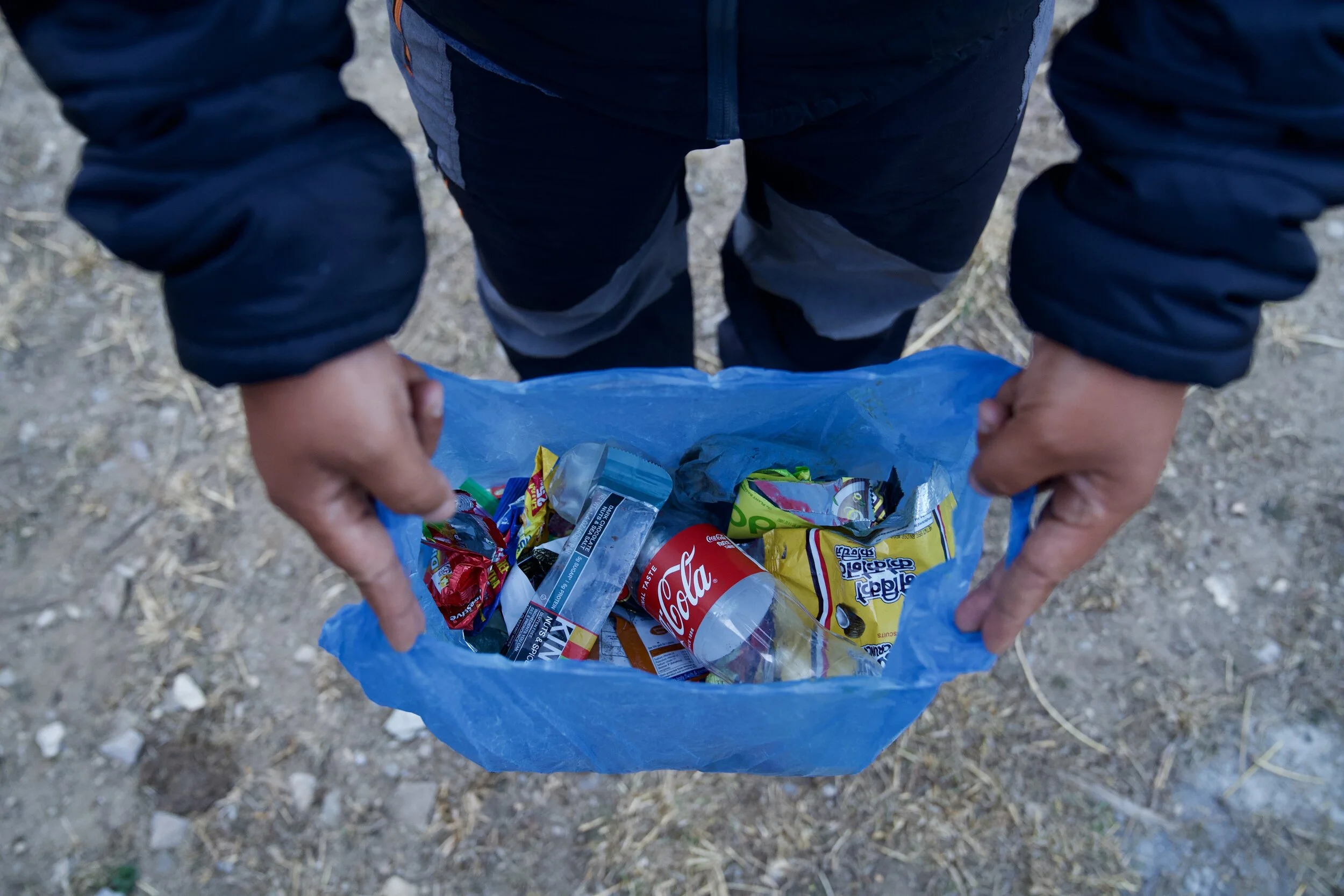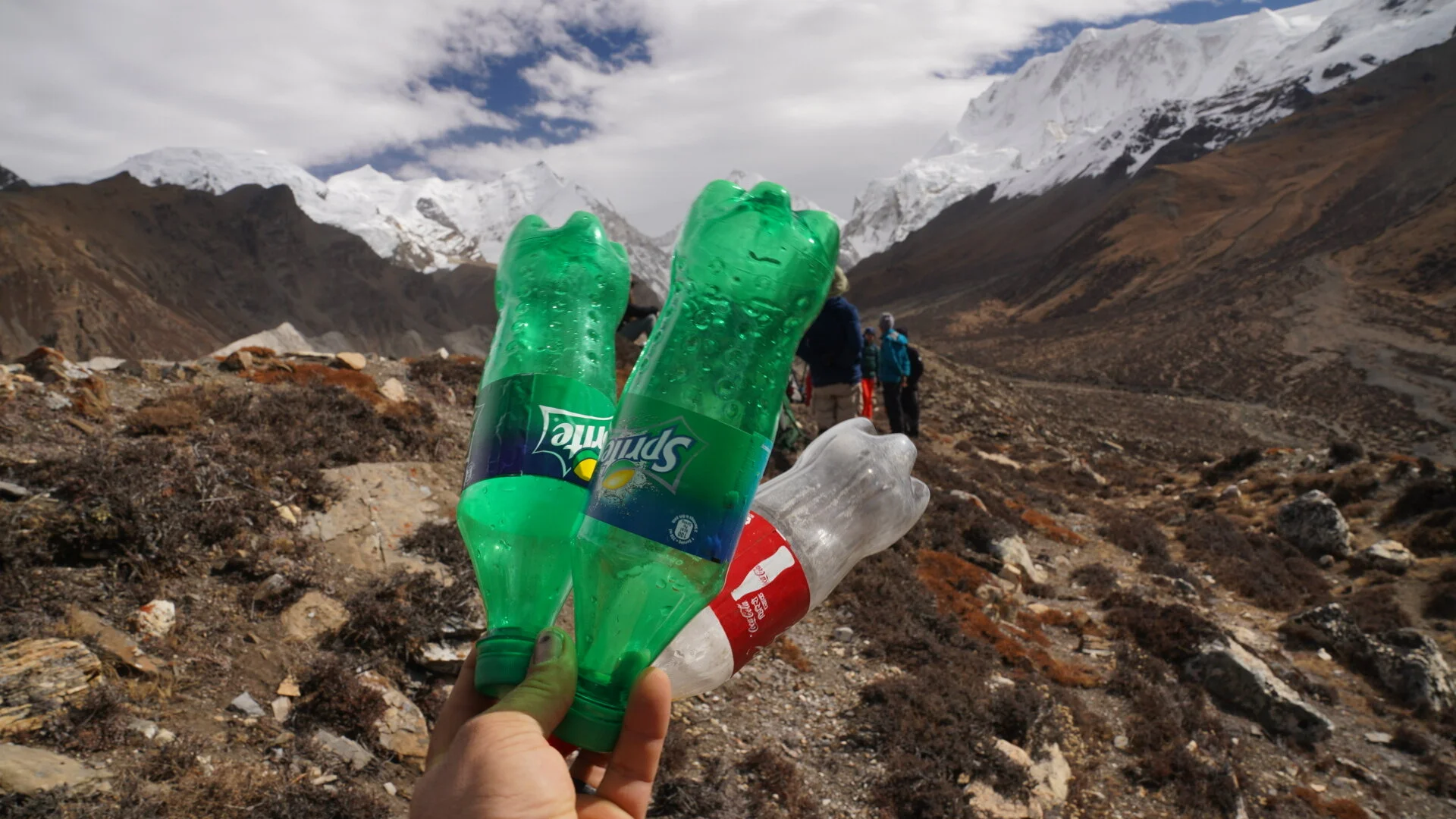5 Myths About Plastic Pollution Debunked
Co-Author: Samiksha Singh, Ph.D. student in the Environmental Science department at the University of California, Riverside
Photo taken by Steven R founder of #trashtag
We live in a time where whales are washing up on the beach with bellies full of plastic bags.
Turtles are getting straws pulled out of their noses.
And the beaks and feet of seagulls are getting entangled in plastic.
All of this indicates that plastic in the environment is exponentially increasing (1, 2).
These startling images have catalyzed many in the environmental movement. Unfortunately, in the heat of the struggle, several myths have perpetuated false narratives that could be detrimental to solving the problem if left unchecked. In this article, we debunk five common myths about plastic pollution
5 Myths about plastic pollution debunked
Plastic can be completely cleaned up from the environment.
Every other day, we hear about some new invention that will clean up all the world’s plastics. “The Interceptor”, “System 001”, and “Mr. Trash Wheel” are just a few of the names these contraptions go by.
After close inspection, two things are clear:
1) The contraptions may cause more harm than good because of bycatch of animals in their system
2) The contraptions have operational limitations that typically mean they miss most of the plastic they are intended to capture (3, 4).
Clean up may be necessary for specific locations where the risk to the ecosystem is low, and the collection of litter will be high. But it is currently impossible to clean up the entire world with any of the devices out there, and it would not be a good idea to do so.
For example, plastic has even been found in the Mariana Trench -a delicate and remote ecosystem. Are we going to go clean it up there and spend potentially billions of dollars to do so? Should we when we may harm the ecosystem in the process? No!
So, be skeptical of the next big thing that claims to be able to “rid the environment of plastic” and focus efforts on preventing plastic from getting into the environment in the first place.
Photo by Brian Yurasits on Unsplash
2. All plastic has the same effect on the environment.
The word “plastic” is thrown around in the media as if all plastic were the same. Unless you are a chemist or an avid recycler, you probably wouldn’t know about the different plastic types.
The chemical and physical properties of plastic are diverse, which determines their risk to the environment. To quote the great Chelsea Rochman Lab, “Plastic is not plastic is not plastic.”
The dangers of plastic in one location will be determined by the composition (size, shape, and polymer type) of all plastic types in that area (5, 6). To make matters more confusing, many of the chemicals within plastic are proprietary, and we will never know what they are. There is evidence that many of these unknown chemicals make plastic more toxic than we would expect.
Therefore, plastic in one region may be causing a much larger or smaller risk compared to another region than we currently understand.
We need transparency in the supply chain to better understand the materials produced today and predict their risks if we are going to solve this problem. There are some efforts underway in the US congress to increase producer responsibility, which should be supported.
3. Plastic doesn’t degrade.
Plastic was invented to be persistent. We needed a cheap material that didn’t break down to replace ivory and other precious materials used to serve the purposes that plastics do today.
But that persistence has been overstated by some claiming that plastic will basically NEVER degrade.
There is a whole field of science that studies the degradation of plastic materials. There are many ways that plastic can degrade including, biodegradation, oxidation, UV degradation, thermal degradation, and mechanical abrasion (7, 8).
The problem is that plastic doesn’t degrade fast enough not to cause problems. Some plastics take hundreds of years to degrade, while others degrade within a few years. It continues to accumulate because it continues to be added to the environment at a fast rate (9, 10). The process of plastic degradation also results in creating smaller and smaller plastic pieces. As the plastic pieces become smaller, new sets of environmental hazards arise. Small plastic pieces, those less than 5mm in size, known as microplastics, are detrimental to the environment. They are easily ingested by animals and have the potential for bioaccumulation and biomagnification.
We should support research into plastic materials that degrade at timescales quickly enough to not create a massive problem in the environment while making sure that what they degrade into isn’t harmful in the environment.
4. Plastics come from (_)...
The headlines say, “Plastics are coming from your clothes,” “Plastics are coming from your water bottle,” “Plastics are coming from the beads in your facial scrub.”
For those who are merely scrolling the interwebs and only seldomly come across a new article about a source of plastic pollution, there is a tendency to suspect that the source they saw is the primary source of plastic to the environment.
In reality, there are hundreds, maybe even thousands of sources of plastic to the environment (11, 12). Anything that is plastic can be a source, and most things people use are made out of plastic these days.
Acknowledge the fact that plastics are in almost everything we use; we cannot leave anything out. Sources are diverse and regional knowledge will be needed to identify solutions.
Photo from Steven R founder of #trashtag
5. The solution to plastic pollution is (_)...
Everyone in the plastic pollution movement has their own pet solution.
Cleanup, zero waste, bans, corporate responsibility, and individual responsibility are just a few.
Although these solutions are often pitted against each other as if they were mutually exclusive, they are not. We can create bans that also push corporations to be responsible for the products they produce. We can conduct cleanups while encouraging individual responsibility.
In most cases, a combination of all of the listed solutions and more will be necessary to address all aspects of plastic pollution. Embrace multi pronged solutions, because that is the only way we will solve the problem of plastic pollution.
There is no ‘quick fix’ to our plastic problem
Plastic cannot and should not be completely cleaned up from the environment. Some plastics are more hazardous than others. Plastics do degrade, but they degrade slower than we need them to. Plastic comes from many sources, and regional knowledge about the most important sources is required to define solutions.
Plastic pollution in our environment is a problem with no quick fix. Solutions will take immense amounts of time, collaboration, communication, and the multi-pronged approach of several different solutions. Policy change, corporate responsibility, and a concerted individual effort to use less plastic are necessary for change.
Even though these solutions may seem large scale, each of us can contribute to the reduction of plastic pollution by engaging with our government, the corporations we purchase goods from, and the materials we use. The solutions to plastic pollution are many, and it will take a village to lift this trash heap and turn it into a clean and healthy environment.
+12 sources
Chris Wilcox, Britta Denise Hardesty, and Kara Lavender Law, (2020). Abundance of floating plastic particles is increasing in the western north atlantic ocean. Environmental Science & Technology. 54 (2), 790-796
Lebreton, L., Slat, B., Ferrari, F. et al. Evidence that the Great Pacific Garbage Patch is rapidly accumulating plastic. Sci Rep 8, 4666 (2018).
Zaat, Loulou, (2020). Below the surface: A laboratorial research to the vertical distribution of buoyant plastics in rivers (Master Theses) Available from TUDelft
Mongabay. (2020, March 17). The Ocean Cleanup's 'Interceptor' Aims to Clean 1,000 Rivers in 5 Years. Will It Work? Retrieved September 22, 2020, from https://www.ecowatch.com/ocean-cleanup-interceptor-2645510058.html?rebelltitem=1
Gray, A. D., & Weinstein, J. E. (2017). Size- and shape-dependent effects of microplastic particles on adult daggerblade grass shrimp (Palaemonetes pugio). Environmental Toxicology and Chemistry, 36(11), 3074-3080. doi:10.1002/etc.3881
Garth A.Covernton, Christopher M.Pearce, Helen J.Gurney-Smith, Stephen G.Chastain, Peter S.Ross, John F.Dower, Sarah E.Dudas, (2018). Size and shape matter: A preliminary analysis of microplastic sampling technique in seawater studies with implications for ecological risk assessment. Science of the Total Environment, 667, 124-132. doi: 10.1016/j.scitotenv.2019.02.346
Baljit Singh, Nisha Sharma, (2008). Mechanistic implications of plastic degradation. Polymer Degradation and Stability, 93(3), 561-584. doi:10.1016/j.polymdegradstab.2007.11.008
Aamer Ali Shah, Fariha Hasan, Abdul Hameed, Safia Ahmed, (2008). Biological degradation of plastics: a comprehensive review. Vol. 26, Issue 3, 246-265. DOI: 10.1016/j.biotechadv.2007.12.005
Jenna R. Jambeck, Roland Geyer, Chris Wilcox, Theodore R. Siegler, Miriam Perryman, Anthony Andrady, Ramani Narayan, Kara Lavender Law, (2015). Plastic waste inputs from land into the ocean. Science, Vol. 347, Issue 6223, pp. 768-771. DOI: 10.1126/science.1260352
Laurent C. M. Lebreton, Joost van der Zwet, Jan-Willem Damsteeg, Boyan Slat, Anthony Andrady, Julia Reisser, (2017). River plastic emissions to the world’s oceans. Nature Communications Vol. 8, Article number: 15611
W.C. LI, H.F. TSE, L. FOK, (2016). Plastic waste in the marine environment: a review of sources, occurrences and events. Science of the Total Environment. Vol. 566–567, 333-349. DOI: 10.1016/j.scitotenv.2016.05.084
Chelsea M. Rochman, (2018). Microplastics research-- from sink to source. Science Vol. 360, Issue 6384, pp. 28-29. DOI: 10.1126/science.aar7734




